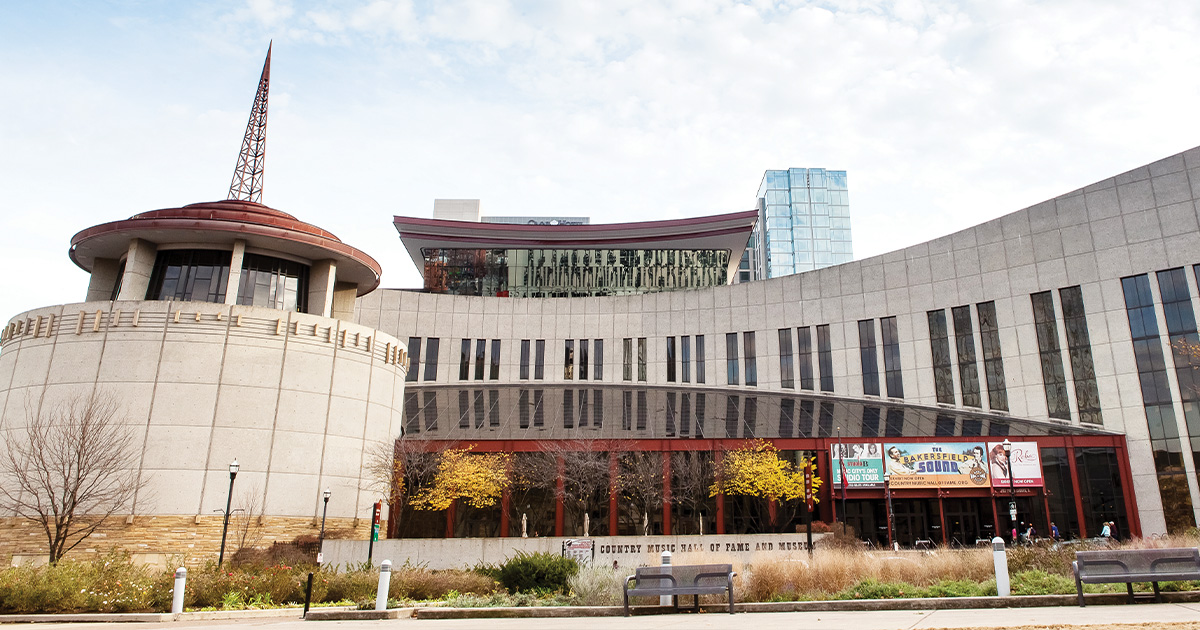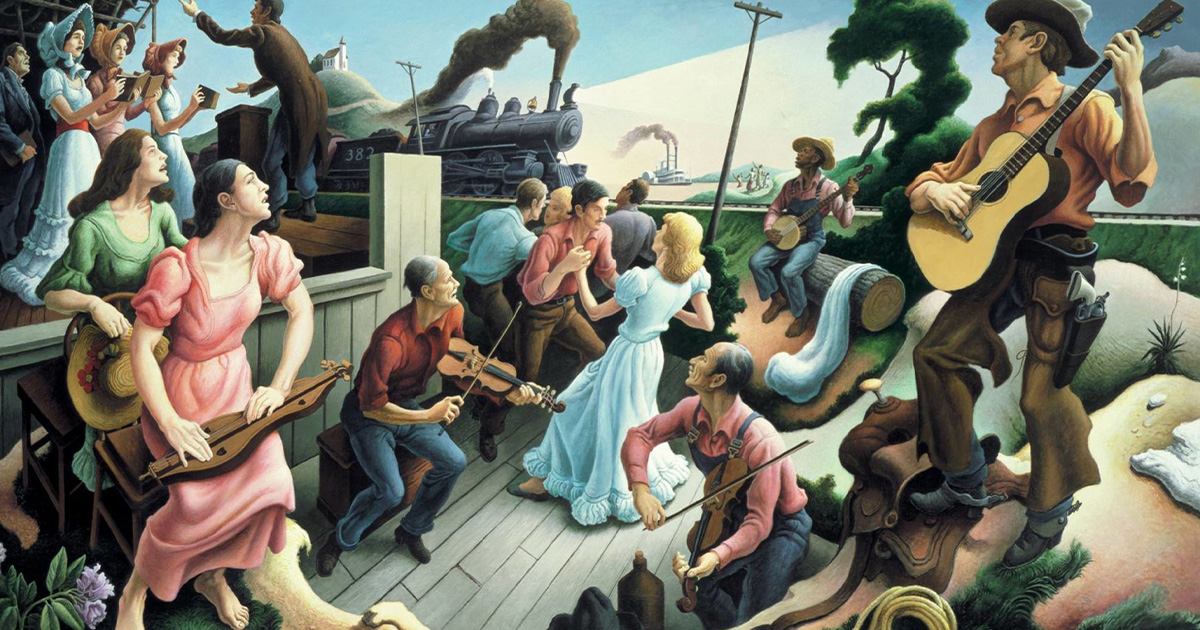
New Country Music Hall of Fame and Museum Exhibit Celebrates 50 Years of Iconic Painting
Thomas Hart Benton's "The Sources of Country Music," hangs as the centerpiece in the museum's Hall of Fame Rotunda.
The Country Music Hall of Fame® and Museum has opened a new exhibition celebrating the 50th anniversary of the commissioning of Thomas Hart Benton's iconic painting The Sources of Country Music, which hangs as the centerpiece in the museum's Hall of Fame Rotunda.
The exhibit, An American Masterwork: Thomas Hart Benton's "Sources of Country Music" at 50, explores Benton's artistic process in creating the mural, which was his final painting. The exhibit, which is included with museum admission, is now open and runs through January 2025.
Benton was a leader in American Regionalism, a modern art movement that featured realistic scenes of the nation's rural and small-town heartland. He agreed to paint The Sources of Country Music mural for the museum in December 1973. Channeling his lifelong passion for country music, Benton created a masterwork that depicts the wide-ranging cultural contributors to the musical genre. Benton died on January 19, 1975, in his Kansas City studio, having placed the finishing touches on this museum commission and while he sat evaluating his work. The completed six-foot by ten-foot mural is a synthesis of the artist, country music subject matter and the museum's educational mission.

The ‘Sources of Country Music’ painting by Thomas Hart Benton in the Hall of Fame Rotunda at the Country Music Hall of Fame and Museum.
The exhibit includes Benton's sketches, drawings, preliminary paintings and his clay maquette (three-dimensional model), which were created as part of Benton's process of realizing The Sources of Country Music mural. It also features a 1975 video of Benton speaking about the painting.
This spring, the museum will also host a 90-minute program on The Sources of Country Music in partnership with the Frist Art Museum. Panelists will provide insightful interpretation of the painting and discuss Benton's technique and background, as well as the story behind the commissioning of the mural for the museum.
About Thomas Hart Benton
Born near Joplin, Missouri, in 1889, into a family immersed in politics and privilege—his father was a four-term congressman from Missouri—Benton was consumed by art from an early age. In 1908, he left the Art Institute of Chicago early to attend school in Paris, then the epicenter of the art movement known as modernism.
Benton moved to New York in 1912. He struggled early, constantly experimenting with his artistic expression and technique, eventually developing a style Time magazine called "an exuberant combination of cartooning draftsmanship, affectionate realism and tightly organized, undulating pattern."
His murals gained popularity and critical acclaim. After the death of his father, the onset of the Great Depression and his clashes with the modernist art scene in New York, Benton turned his attention and his art homeward. He returned to Missouri to teach at the Kansas City Art Institute in 1935.
During years leading up to World War II, Benton led the creation of a new art movement, American Regionalism, that embodied his homeward impulse. American Regionalism focused on recognizable people, everyday life and scenes from small-town America, primarily in the Midwest. Following the war, nonrepresentational art, popularized by Abstract Expressionist painters such as Benton's protégé Jackson Pollock, emerged. As artistic styles and movements evolved in the contemporary era, Benton continued to paint predominantly nostalgic views of preindustrial Midwest for the next 30 years.
Read more about Benton and the painting and exhibit by visiting Country Music Hall of Fame and Museum.
Courtesy of Groups Today.
Photos Courtesy of Country Music Hall of Fame and Museum.



